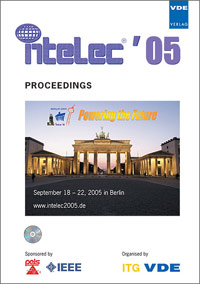Powering the Emerging Full Service Access Networks (FSAN) - the last mile challenge
Conference: Intelec '05 - Telecommunications Conference - 27th International Telecommunication Energy Conference
09/18/2005 - 09/22/2005 at Berlin, Germany
Proceedings: Intelec '05 - Telecommunications Conference
Pages: 7Language: englishTyp: PDF
Personal VDE Members are entitled to a 10% discount on this title
Authors:
Balaban, Adrian; Pitts, Allen (NN)
Abstract:
Definitely the world is emerging as the breeding ground for high bandwidth broadband connectivity. Only in Europe by the end of last year there were already 33.7 million broadband lines that will continue in the double digits growth. Since 1980 many trials aiming to introduce "high" bandwidth via access networks have been carried out by the telecom companies, but failed short of becoming full deployments because of high cost, powering issues and lack of strong customer demand. For more than fifteen years FTTx (Fiber to the Premises/Kurb/BuildingkIome) trials never gain traction ... until now. Since the eighties access networks had evolved with DSL (Digital Subscriber Line) and HFC (Hybrid Fiber Coax) being the most affordable interim solutions, despite their time-consuming provisioning and limited bandwidth due to distance and quality of existing wiring. With the rapidly Voice, Video, Data - "triply play" convergence, consequently the rapidly growing high bandwidth demand the [Broadband] Passive Optical Networks (PON) are expected to succeed as the leading optical access technology, becoming the most economical component of the FTTx architecture whilst offering greater bandwidth at a cost effective technology in terms of CAPEX as well as OPEX . With the imminent PON deployments and VOIP becoming a reality, the access and home networks devices may be required to continue to operate similarly to the Plain Old Telephone Systems (POTS), to maintain power through commercial outages. Which of the power architectures: xDSL, HFC, PONS, or the supply of power on the same generic cabling used for data transmission are the optimum, most cost effective solution? Can they converge? Is the power ready to address the last mile challenge?


